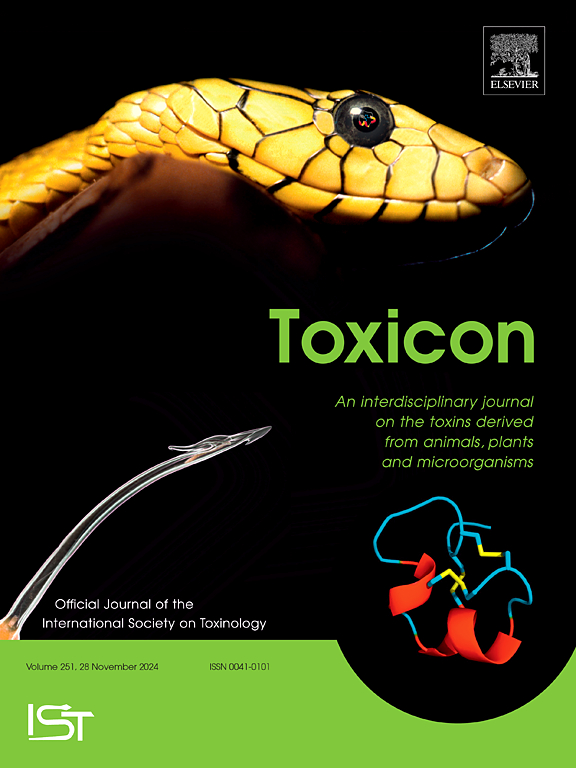Metagenomic analysis of pathogenic microorganisms in bloodstream infections following venomous snakebites
IF 2.6
4区 医学
Q2 PHARMACOLOGY & PHARMACY
引用次数: 0
Abstract
Purpose
This study aimed to investigate the biometric characterization of pathogenic microorganisms associated with bloodstream infections in patients bitten by venomous snakes, and to determine whether the composition of these microorganisms influences the effects of snake venom.
Methods
The composition and relative abundance of microorganisms were statistically analyzed using metagenomic next-generation sequencing (mNGS) on blood samples from patients with varying degrees of snakebite injuries. These patients were admitted to the our study.
Results
In the light injury group (group L), the dominant phylum and genus were Pseudomonadota (73.31%) and Pseudomonas (35.32%). In the moderate injury group (group M), the predominant phylum was Bacillota (56.74%) and Aerococcus (45.45%). There was no statistically significant difference in the microbial composition between group L and group M based on α- and β-diversity analyses. LEfSe differential analysis revealed that the absolute abundances of Actinomycetota and Actinomycetes were higher in group L, while Pseudomonas aeruginosa emerged as a significantly differential species in Group M.
Conclusion
The study found that differences in bacterial bloodstream infections due to venomous snakebite may enhance the effects of snake venom, leading to more severe injuries. The mNGS technique can rapidly detect pathogens related to venomous snakebites and has the potential for broader clinical use.

毒蛇咬伤后血流感染中致病微生物的元基因组分析。
本文章由计算机程序翻译,如有差异,请以英文原文为准。
求助全文
约1分钟内获得全文
求助全文
来源期刊

Toxicon
医学-毒理学
CiteScore
4.80
自引率
10.70%
发文量
358
审稿时长
68 days
期刊介绍:
Toxicon has an open access mirror Toxicon: X, sharing the same aims and scope, editorial team, submission system and rigorous peer review. An introductory offer Toxicon: X - full waiver of the Open Access fee.
Toxicon''s "aims and scope" are to publish:
-articles containing the results of original research on problems related to toxins derived from animals, plants and microorganisms
-papers on novel findings related to the chemical, pharmacological, toxicological, and immunological properties of natural toxins
-molecular biological studies of toxins and other genes from poisonous and venomous organisms that advance understanding of the role or function of toxins
-clinical observations on poisoning and envenoming where a new therapeutic principle has been proposed or a decidedly superior clinical result has been obtained.
-material on the use of toxins as tools in studying biological processes and material on subjects related to venom and antivenom problems.
-articles on the translational application of toxins, for example as drugs and insecticides
-epidemiological studies on envenoming or poisoning, so long as they highlight a previously unrecognised medical problem or provide insight into the prevention or medical treatment of envenoming or poisoning. Retrospective surveys of hospital records, especially those lacking species identification, will not be considered for publication. Properly designed prospective community-based surveys are strongly encouraged.
-articles describing well-known activities of venoms, such as antibacterial, anticancer, and analgesic activities of arachnid venoms, without any attempt to define the mechanism of action or purify the active component, will not be considered for publication in Toxicon.
-review articles on problems related to toxinology.
To encourage the exchange of ideas, sections of the journal may be devoted to Short Communications, Letters to the Editor and activities of the affiliated societies.
 求助内容:
求助内容: 应助结果提醒方式:
应助结果提醒方式:


